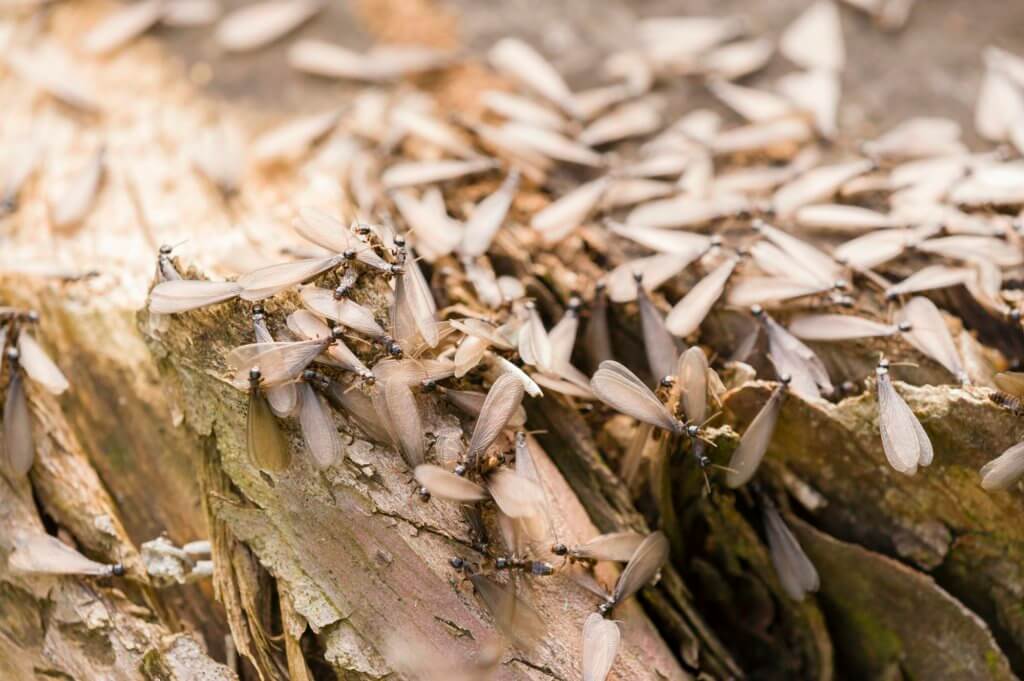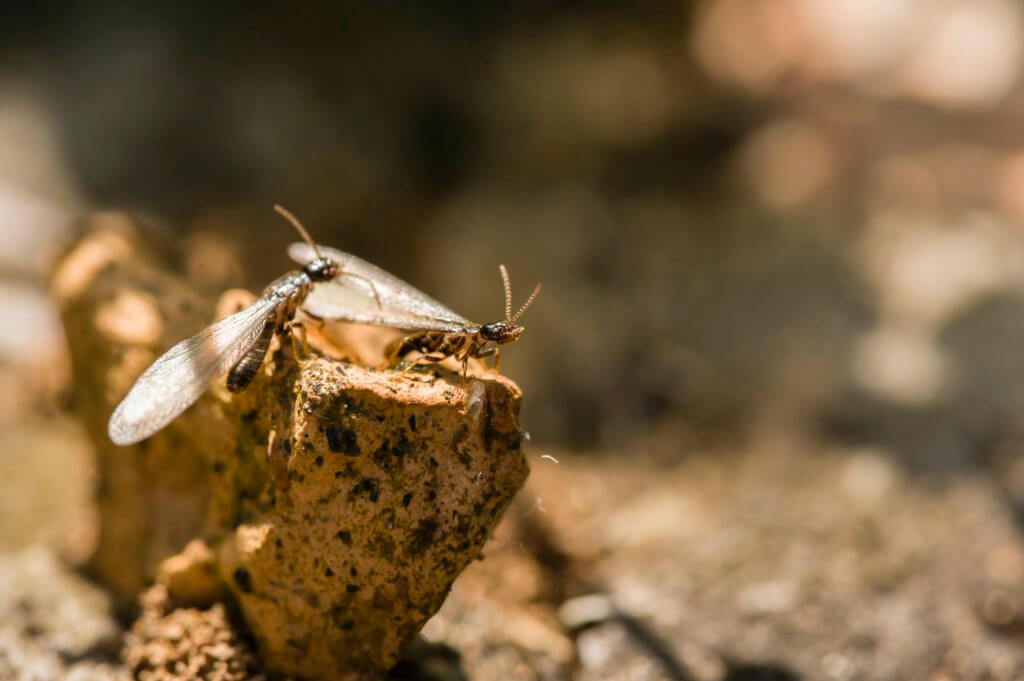Are you aware of the risks associated with termites and the type of damage that could be done to your home by these insects? To adequately protect your home, you should be aware of the significant early warning signs of a termite-infested house. The earlier you see the signs of termites, the better your chance of preventing severe damage.
Termites aren’t the only insects you should protect your house from, but they are one of the most significant structural risks to your home. Here are seven early warning signs of a termite-infested house to look out for.
#1: Discarded Wings
Many homeowners discover termites in their homes after finding wings near their home’s foundation, both inside and outside. Discarded wings are left behind by a particular type of termite known as a swarmer, and these happen when an infestation has already taken route.

If you find wing piles in areas around your foundation, it’s key to call a professional as soon as possible to determine what type of infestation is at work and how to treat it quickly.
#2: Hollow, Damaged Wood
If you are moving into a new property or looking for early warning signs of termite activity, it’s essential to know how to check wood for signs of damage. Termites consume wood, and they usually eat it from the inside out. This means that nothing is left behind but a thin veneer of wood or just the paint in more serious cases.
Knock on wood in areas where you suspect termite infestations. If you notice that the wood feels thin like paper or sounds hollow, it is likely infested. The wood feels different because it has been eaten away from the inside.
#3: Termite Cracks On Your Walls
Another thing that you should look out for when worried about termites is cracks on your internal walls. These unexplained cracks could be a sign that termites are at work inside of your walls. As termites eat away, the timber develops cracks, and these cracks may seem like there is no reason for them. This is usually more common in older houses.
Knock on the walls surrounding these cracks to see if there are any signs of termites while waiting on a professional to come and check things out. Don’t forget to look up when looking for these cracks. Check ceilings as well, as these areas are also in danger of infestation.
#4: Hard To Open Windows And Doors
Do you have any doors or windows in your home that seem to be more challenging to open than usual?
While windows and doors will go through periods of being more difficult to open due to how wood warps with temperature and humidity changes, they can also warp due to termite damage.
As termites eat away at the inside of door and window frames, the wood can begin to warp and make it harder to open windows and doors. This happening isn’t a guarantee of termite problems, but this can be a warning sight that can go unnoticed if you don’t realize that termites, like humidity, can cause these changes.
Sometimes, it can be hard to tell if the issue you are dealing with is due to termites, carpenter ants, or something else altogether. The only way to know for sure when you know there is some type of infestation is to work with a professional.

#5: Seeing Swarmers
You’ve already learned about what wings around your foundation might mean, but where do those wings come from?
The discarded wings mentioned above come from what are known as swarmers. Swarmers are a type of flying termites, and if you see swarmers, it’s time to take action. Swarmers emerge from termite nests in large groups once the population reaches a specific size. The swarmers are seeking a mate as they leave the nest.
The behavior seen in these swarmers will depend on the type of termites that you are dealing with. Some will swarm at night; others will swarm after it rains during certain seasons. Regardless, seeing swarmers is a big deal, and you should take action immediately.
#6: Look For Mud Tubes
Many people know about mud tubes. Mud tubes are one of the most easily spotted signs of termite activity. Usually, these tubes show up on the edges of your foundation, and the tunnels act as tubes for finding food.
Subterranean termites seek this type of moisture as they build up their homes. You can reduce termite risk by ensuring that these environments are rare around your home. Mud tubes are a sign of the most destructive type of termites, so make sure to act immediately to check for an active infestation if you discover these around your home.
#7: Finding Frass
Have you ever heard of frass?
Frass is the droppings left behind by drywood termites. These wood-colored droppings look like small pellets and are often left behind in piles. If you find a pile of these droppings inside or outside the home, these are signs of termite infested house, and you should call a professional.
Termite Infestation FAQ:
How long does a termite inspection take?
The duration of a termite inspection can vary depending on the size and complexity of the property being inspected. On average, a thorough inspection typically takes anywhere from 30 minutes to an hour. However, larger properties or those with extensive woodwork may require more time. It's crucial not to rush the inspection process as thoroughness is key to identifying any potential termite infestations accurately.
When is termite season?
Termite season varies depending on the region and climate conditions. Generally, in temperate climates, spring is considered prime termite season as the warmer weather encourages termite activity and swarms. However, in warmer regions, such as the southern United States, termite activity can persist year-round. It's essential to remain vigilant for signs of termite activity regardless of the season.
Does bleach kill termites?
While bleach is effective in cleaning and disinfecting, it is not an effective method for killing termites or eradicating infestations. Termites live in colonies deep within wood structures, making direct contact with bleach difficult. Moreover, even if some termites are exposed to bleach, it's unlikely to eliminate the entire colony. Professional treatment methods tailored to termite control are recommended for effective eradication.
How much termite damage is too much?
Determining the extent of termite damage can be challenging, as it often occurs hidden within structures. However, any visible signs of termite damage should be cause for concern and prompt action. Common indicators of termite damage include hollow-sounding wood, sagging floors or ceilings, mud tubes along walls, and discarded wings near entry points. It's advisable to seek professional inspection and treatment if termite damage is suspected, as ignoring the issue can lead to costly repairs and structural instability.
What animals eat termites?
Several animals include termites as part of their diet. Some of the most well-known termite predators include anteaters, aardvarks, certain species of birds like woodpeckers and swallows, and various types of reptiles, including certain species of lizards. These predators play a crucial role in controlling termite populations in their natural habitats. Additionally, certain insects, such as ants, also prey on termites, engaging in territorial battles over resources and nesting sites.
Get in touch with us at Gunter Pest & Lawn today at 816-444-2847.









